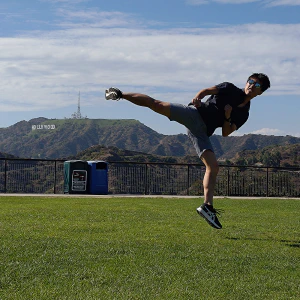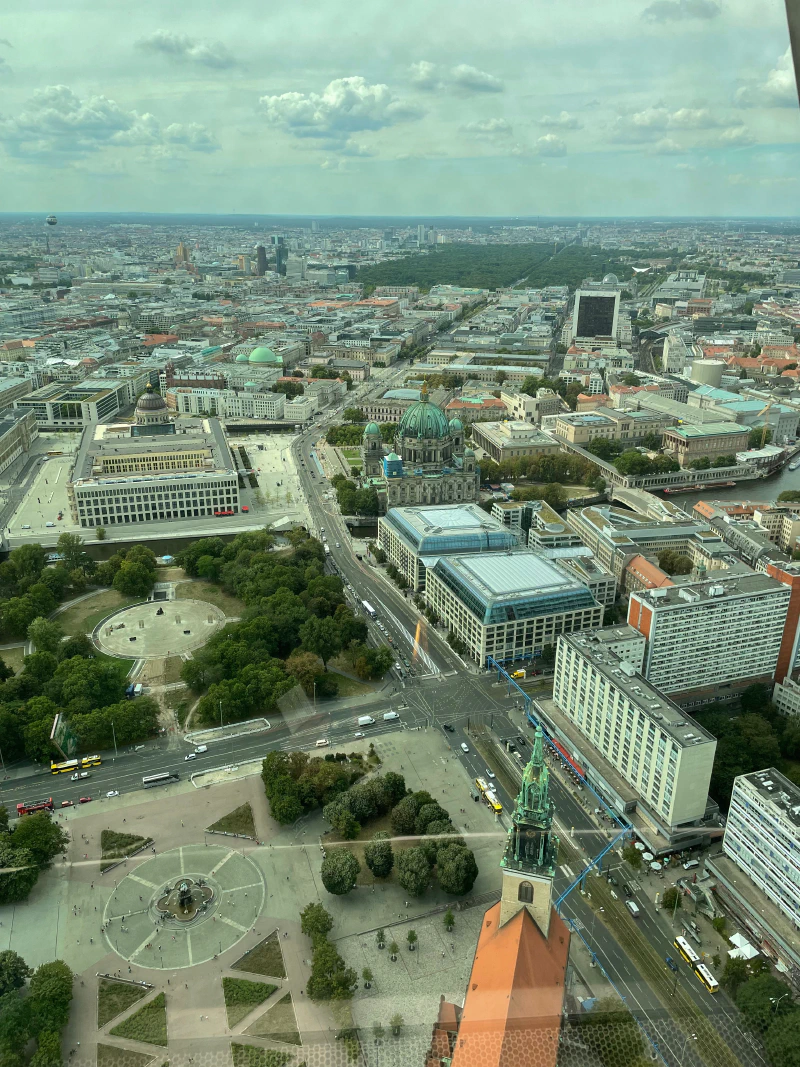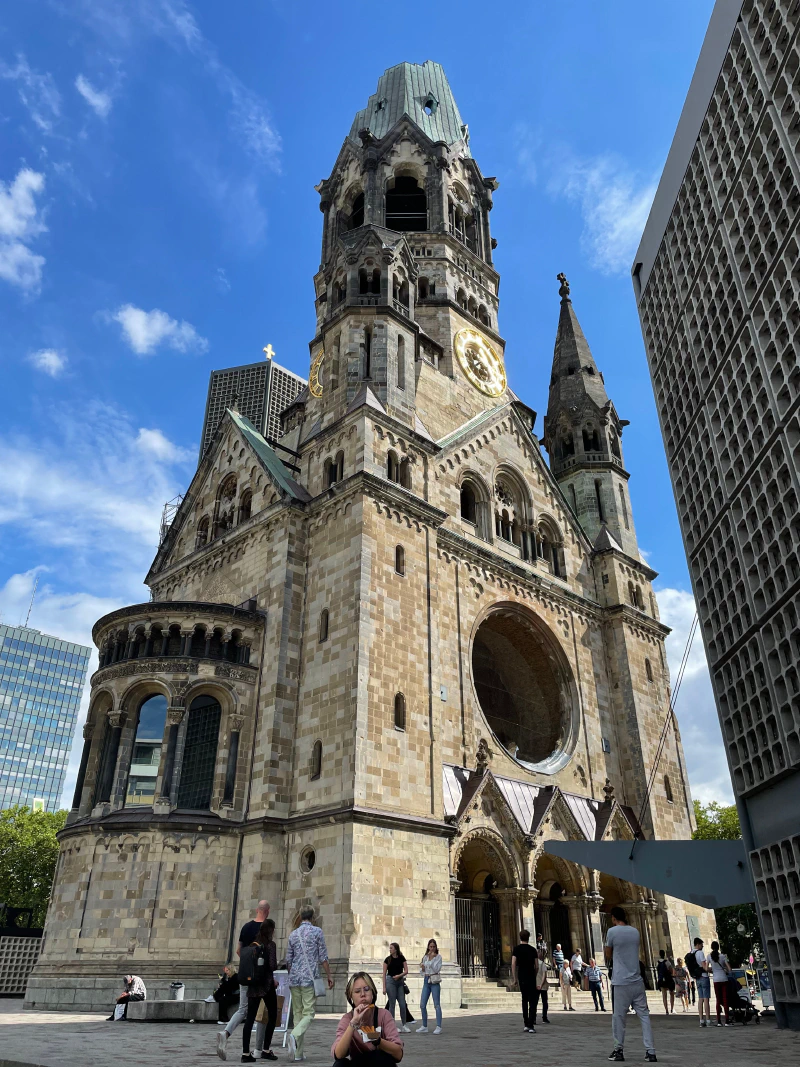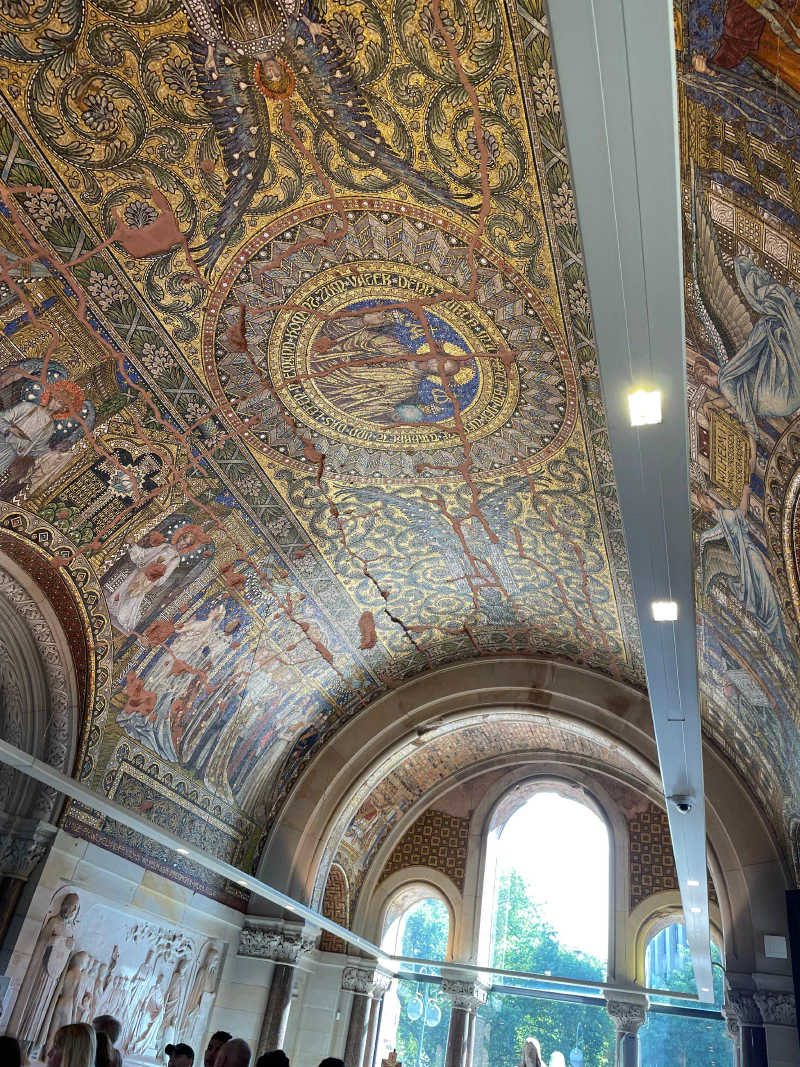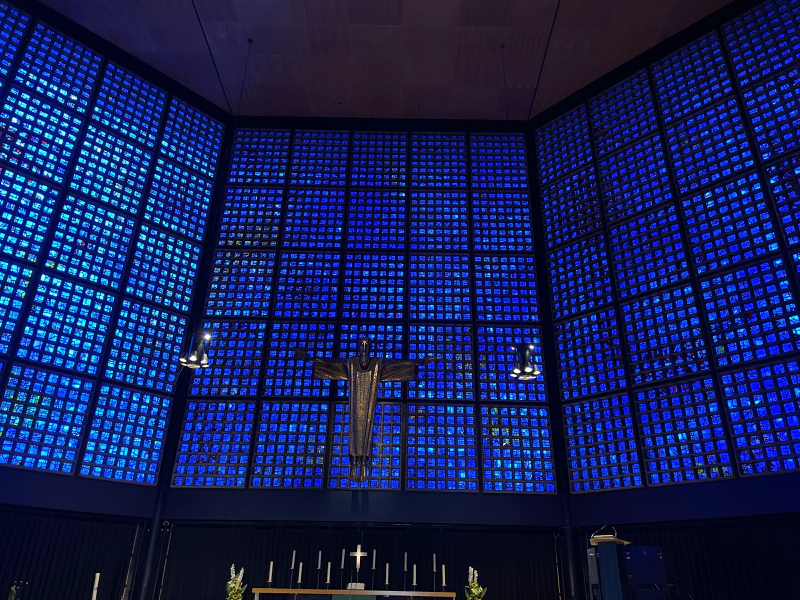Posted
on
in
Berlin Matrix Community Summit 2022
• 1643 words
• 8 minute read
Tags:
Travel, Berlin, Germany, Matrix Community Summit
I’m in Berlin for the Matrix Community Summit 2022, but I arrived a few days early so that I could spend some time sightseeing. I am still trying to put in mostly full days at work while I’m here in until the Summit starts by working afternoons and evenings.
On Monday, I went to the TV Tower, the tallest building in Germany. I took the S-Bahn from my hotel which is just a couple stops away from the TV Tower. The Tower was built by the Soviets while Berlin was divided between East and West. I got a ticket up to the observation deck, and the views were great!
All around the observation deck are information panels with pictures of the city with overlayed information about the various sites in all directions. A two themes that were prevalent in the callouts: the Jewish influence in various areas of the city (a very potent topic for obvious reasons), and the East/West divide imposed by the Soviet occupation.
After walking around the entire observation deck, I walked around in the area a bit longer. There’s a cool clock in Alexanderplatz that shows the time in different places in the world.
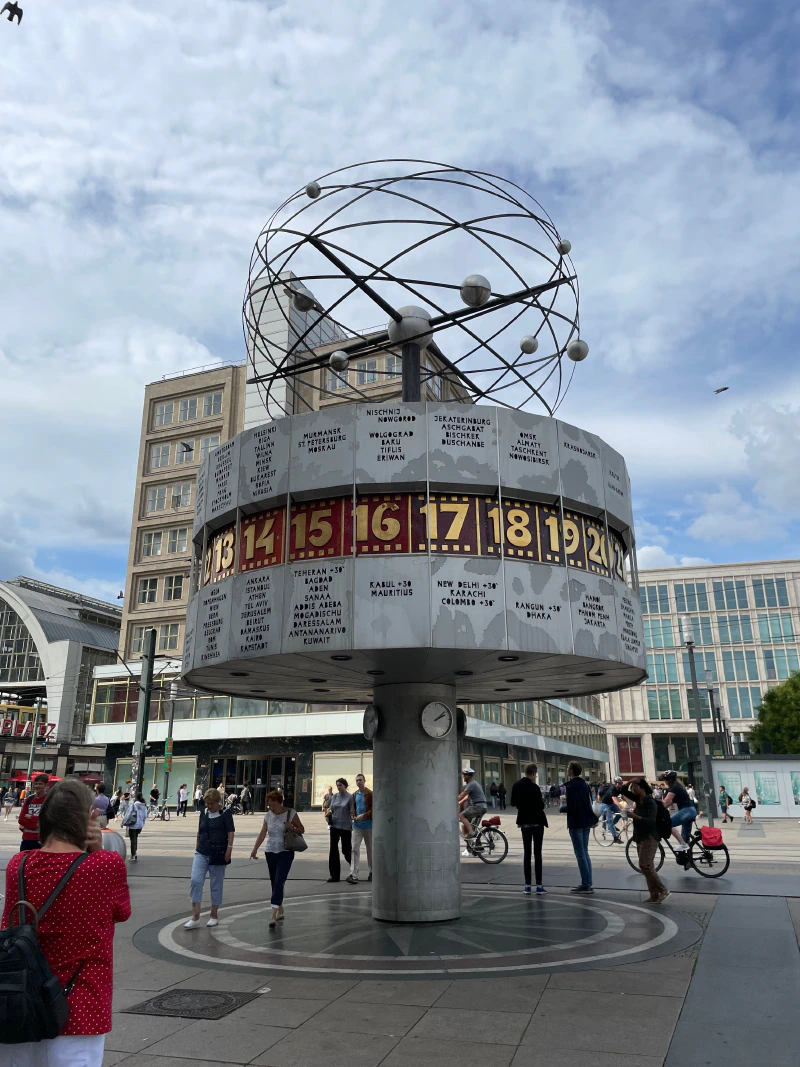
One thing I always find fascinating is how the exonyms that non-English languages give to places differ from those that English gives the same places.
On my way back to the hotel, I stopped at the ALEXA, a large mall and went to the food court for a currywurst.
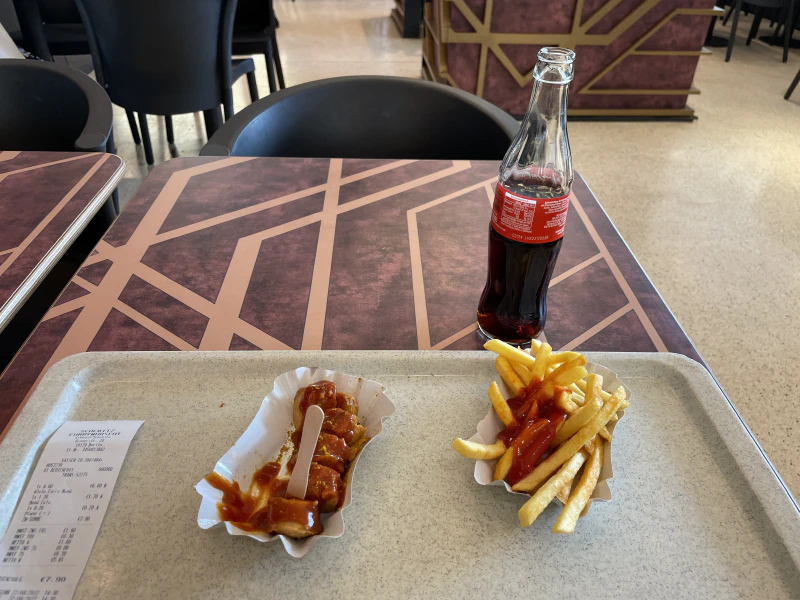
Apparently, it’s a somewhat unique cuisine to Berlin
On Tuesday, I went to the Pergemonmuseum. The museum is on Museumsinsel and houses reconstructions of multiple significant historical sites. Most famously, it houses the Ishtar Gate from Babylon. The scale of the gate is immense, and the passage leading to the gate is equally impressive. In fact, the reconstructed passage is significantly narrower and shorter than the actual passageway, and the gate itself is just a part of the larger gate structure. I can’t imagine how a subsistence farmer in antiquity would have felt as he approached the gates.
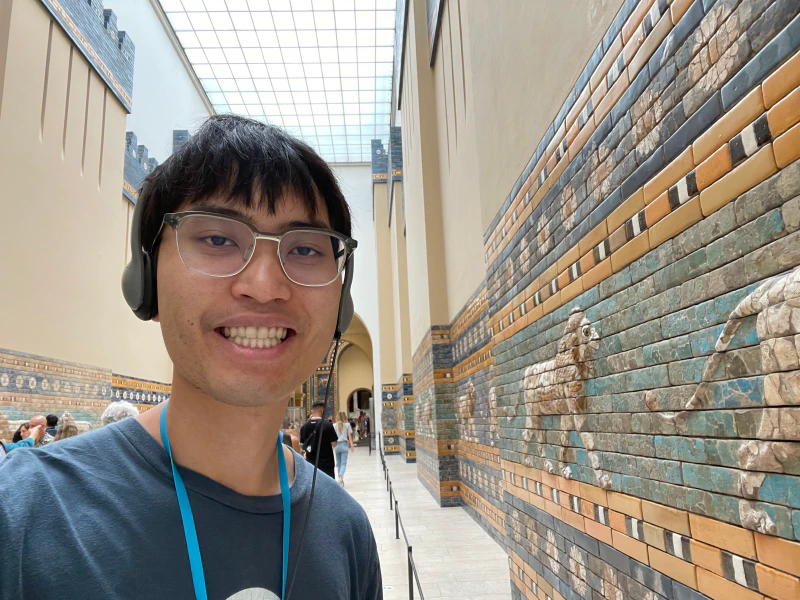
Imagine being a peasant walking past these lions lining the path. That must have been terrifying!
The other major construction was of a Roman market gate. It is an immense two-story stone structure. It’s amazing how much care was put into building the entrance to something as basic as a market!
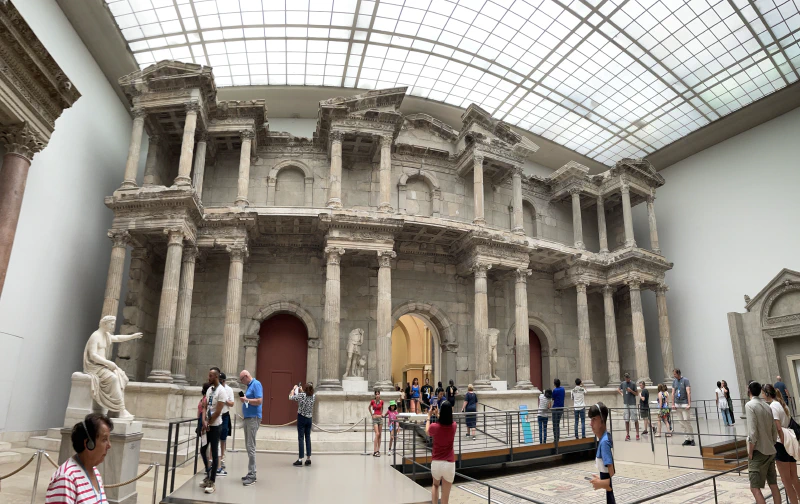
The size of the structure goes to show the immense wealth of the Roman Empire at its height.
I had an audio tour for the museum and walked through many other exhibits in addition to the main reconstructions. Many were exhibits featuring many near-eastern antiquities. Whenever I see exhibits on ancient cultures, I’m amazed by the artistry. There have always been smart and talented people throughout history, and it’s always interesting to have a peek into their lives through their art.
One exhibit that I enjoyed that is somewhat off the beaten path is the Aleppo Room. This is a reconstruction of a room from a merchant’s house in Aleppo from around the year 1600. The room is decorated using colourful wood panels with depictions of events from the Bible such as the Last Supper. There are also inscriptions from the Psalms as well as Arab proverbs. Most people believe the room was meant to make people of all faiths comfortable in the home of the merchant.
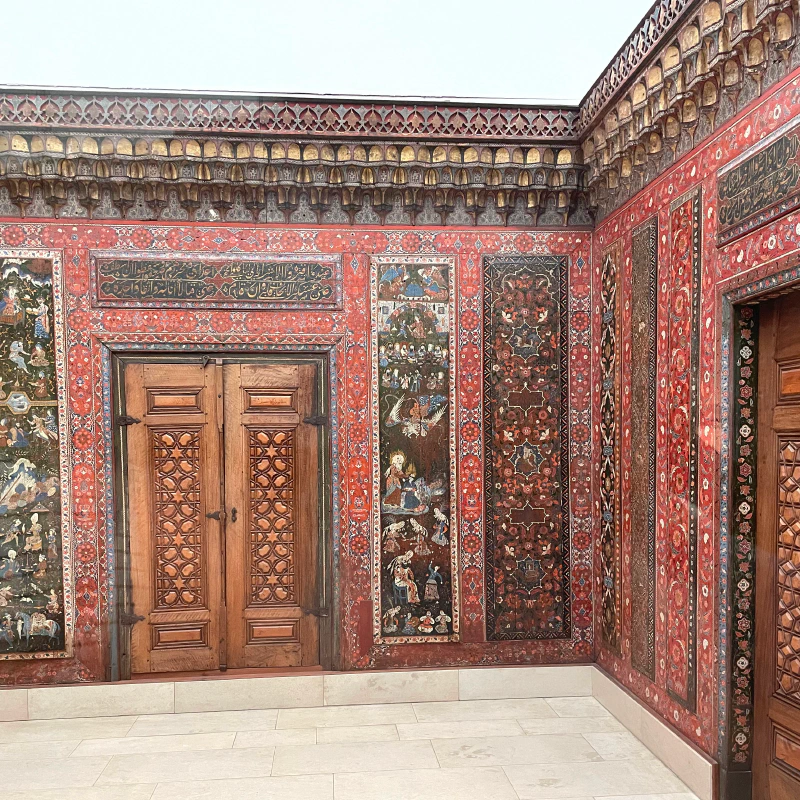
The intricate details on the wood panels were beautiful, and demonstrated the wealth of the merchant who commissioned their creation.
After visiting the museum, I headed over towards Charlottenburg. The reason for going that direction was that I was going to meet someone who was also attending the summit. I also wanted to visit the Kaiser Wilhelm Memorial Church. The site has the ruins of a church that was mostly destroyed during the war (as most buildings were). There’s a modern octagonal structure next to the ruins of the old church. On the outside, it has a very Brutalist appearance, but inside, the blue stained glass windows create a very reverent space.
The ruins of the Kaiser Wilhelm Church | The mosaic on the ceiling inside of the ruins of the church structure |
The inside of the modern church structure The blue light gave an unexpected, but quite nice, ambiance to the space. | |
I then went over to the Technische Universität Berlin campus and worked there for a few hours, and then met up with Kim, the guy who was attending the summit, and a friend of his at a doner kebab restaurant. The kebab was fantastic, and it was cool to meet a fellow Matrix-enthusiast in person.
After eating, we headed back east to go to the NixOS Meetup at C-Base. I’ve been using NixOS for a couple years now, and it was fun to meet up with other Nix users. I’m technically a maintainer of the Nix Home Manager project. (I’m a somewhat horrible maintainer since I don’t spend enough time helping to review PRs and such.) One of the attendees of the meetup actually was someone I’d interacted with on GitHub, so that was cool to see actual people that I’d been talking to online.
On Wednesday, I went over to the Reichstag building. I had done absolutely zero preparation for the trip, so I didn’t have a ticket to go inside. It’s quite impressive from the outside, and maybe in the future, I’ll actually plan my trip and go inside. I hear there’s good views from the glass dome.
I decided to walk through the over to the Soviet War Memorial in the Tiergarten. The memorial is in the Western half of the city, and it commemorated the Soviet sacrifices during the Battle of Berlin. The Soviets took horrifying losses during the battle. The Western wartime leaders disagreed about whether they should continue advancing east or allow the Soviets to face the brunt of the Nazi army and be the liberators of Berlin. Would the post-war era have been different if the Soviets were not the liberators of Berlin? I am not sure. But one thing I know for sure is this: the Red Army fought valiantly to defeat the Nazis and liberate Berlin. We should honour their great sacrifice.
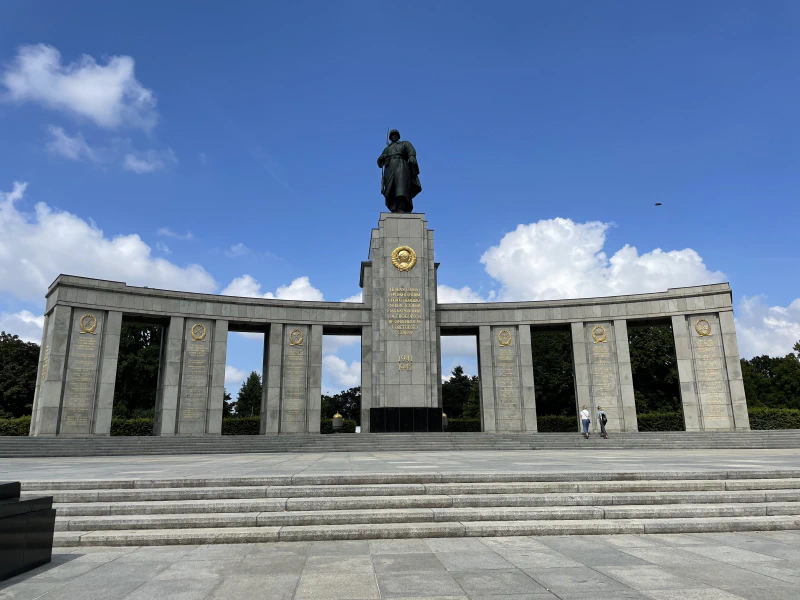
The Red Army sustained massive losses in liberating Berlin.
I then walked towards the Brandenburg Gate. Along the way, I encountered a plaque commemorating the place where President Reagan gave his Tear Down This Wall speech. That gave me the idea of listening to the two most famous Presidential speeches given in West Berlin: Kennedy’s and Reagan’s. I listened to them as I sat under the shade of some trees near the gate.
Kennedy’s speech is most well known for the “Ich bin ein Berliner” part. In spite of the common perception that this was a gaffe meaning “I’m a jelly doughnut”, it was in fact not a gaffe, and was instead a powerful display of solidarity with the besieged West Berliners. However, in my opinion, the most powerful part of his speech was his series of “let them come to Berlin” statements. I’ll copy them here:
There are many people in the world who really don’t understand, or say they don’t, what is the great issue between the free world and the Communist world. Let them come to Berlin. There are some who say that communism is the wave of the future. Let them come to Berlin. And there are some who say in Europe and elsewhere we can work with the Communists. Let them come to Berlin. And there are even a few who say that it is true that communism is an evil system, but it permits us to make economic progress. Lass’ sie nach Berlin kommen. Let them come to Berlin.
– John F. Kennedy
Reagan’s speech contains the famous “Mr. Gorbachev, tear down this wall!” line, but most of the rest of it was actually very policy-heavy. It was a significantly longer speech than Kennedy’s. He championed the success of the Marshall Plan and the economic success of the West. He also called for arms reductions and more openness between East and West Berlin. It was clear in the content of the speech that Reagan did not expect the wall to fall only two years later, but fall it did.
Kennedy’s speech was much more emotionally potent, while Reagan’s was much more politically potent. I think they were the right speeches for their times, but if I were to choose just one to exist, it would be Kennedy’s.
After listening to the speeches, I made my way through the gate. I thought about the fact that just a few decades ago, that gate was closed off and barricaded by armed guards. Yet today, you can’t tell which side was on the East and which was on the West. In fact, the plaza on the eastern side of the gate seems to be the more popular tourist destination. (It is a pedestrian-only zone unlike the Western side, so maybe that is the driving factor there.)
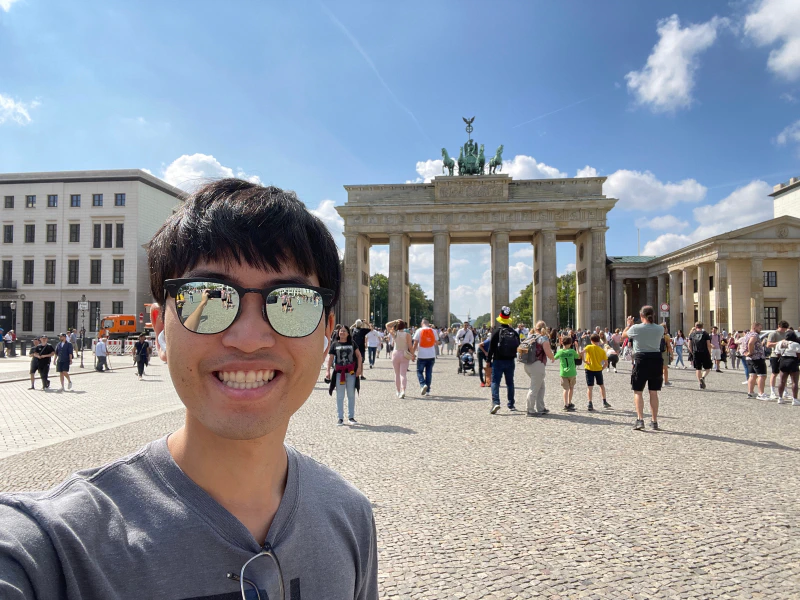
Besides its recent historical significance, the gate itself is really quite cool.
By this time, it was about lunchtime and I got a currywurst from a food stand before heading back to the hotel to work for the afternoon and evening.
Berlin is a beautiful city. That it was divided for so long is a tragedy. The scars of communist rule can still be seen across the city. But the unity of the German people was stronger than the political forces separating them, and today, Berlin is a vibrant metropolis and was an absolute joy to visit.
